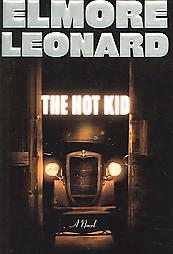 appear with his recent film successes he is finally getting some notoriety.
appear with his recent film successes he is finally getting some notoriety.The Hot Kid is an excellent novel where Leonard has left his somewhat traditional Detroit for the dusty Prohibition Era Tulsa, Oklahoma. Bank robbers, gun molls, and U. S. Marshals make up the cast of characters that come alive as part of the intricate world that Leonard has created. U. S. Marshal Carl Webster is the at the center of the action, making a name for himself as a marshall who always gets his man. As we see Carl develop as a man and marshall, we see the parallel life of Jack Beaumont, and his rise to a nationally infamous wanted criminal.
Leonard excels in crime writing, and obviously the western. One of my all time favorite western short stories is The Tonto Woman. Now he can add historical fiction to the numerous feathers in his cap. Leonard has a way with dialogue and characterization that makes the reader even like the "villains". He name drops and alludes to activities that are not elaborated upon in the novel, but it gives a depth to the narrative and allows Leonard to jump off at any point and stick a short story in here and there to develop his world even further out side the confines of the novel. I had read two short stories, Louly and Pretty Boy (Louly becomes Carl's wife), and Tenkiller (the story of Carl's grandson), are both excellent stories in their own right, and it is definitely something I have learned from Leonard. The story does not end on the page. If you know, REALLY know your characters (enough to write tons of material about them) then that will translate directly to the page.

